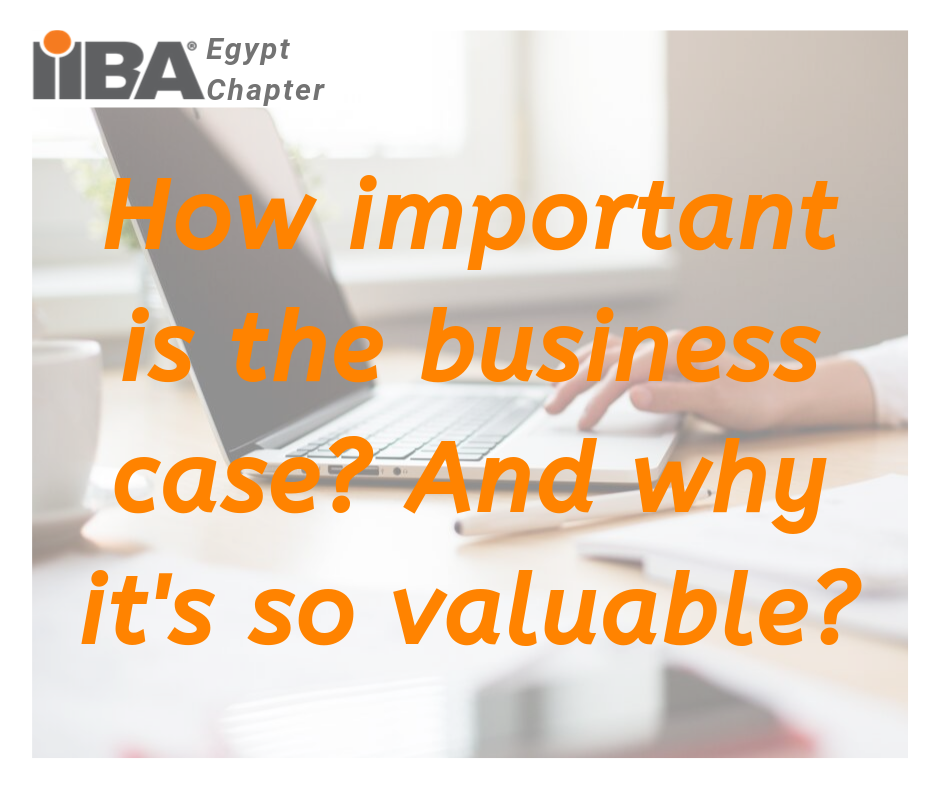How important is the business case? And why it's so valuable?
September 01, 2019
Amani Hassan
VP of Marketing and Communications

The business case developed by those requesting a solution is usually developed to help with a justification.
- So how does an organization choose their projects?
- Are there any specific methods or documents that can help justify the resources needed?
This business case document is often a formal document. The time and effort required to develop it though should be consistent with the size and importance of the solution being justified. Why?
Because it is a living document; It helps ensure that the project remains aligned with the organizational objectives also this is especially important when organizational objectives change.
When a business case is developed and reviewed as part of a portfolio management process, it becomes a valuable input to the initiating of the project or initiative. It provides valuable information of the business need and the proposed solution. If it's not created, the scope of the project or initiative may creep beyond what was initially envisioned, resulting in cost overruns, delays, and possible rework. And if a project or program is no longer in alignment with the current strategy, it runs the chance of being canceled.
The worst situation is that the result of the effort is never used because it didn't meet the needs or expectations of the original requester. This documents the potential benefits and justifies the resources needed. These resources may include people, supplies, and equipment, as well as financing options. The benefits need be weighed against the cost of the solution. But the cost is not just for the development of the solution, but also for any ongoing support requirements. This analysis reviews the findings from the needs assessment activities to the goals and strategic objectives of the organization. It becomes one of the key inputs for project initiation, providing a concise and comprehensive view of the business need and the proposed solution for that need.
Content of business case:
The business case is used to justify initiating a project, as well as providing a summary of previous needs assessment activities and objective. Now, there are major components of a business case:
Executive summary:
The business case addressed all key aspects of the project, with focus on the rationale behind your recommended course of action and the support of a return on investment.
Plan outline:
Respond to required actions, including when they will be completed and who will complete them.
Scope:
Addresses dependencies and required collaborations.
Project organization and communication:
Describe roles and responsibilities for each member align with project plan.
Situation Analysis:
This analysis identified and provides context for the problem and solution to be addressed. When providing background, consider using another SWOT analysis.
Business objective:
This objective states what you intend to achieve by initiating the project. Include both qualitative and quantitative benefits.
Optional Solutions:
Consulting with all stakeholders, identify all potential solutions.
Recommendation:
A statement of your recommended course of action should list the other options and show why chosen these options.
Benefits:
Quantify the value of the desired outcome by using metrics as much as possible.
To summarize the business case includes, The identified needs of the situation statement , Identification of stakeholders, and
The initial scope of the proposed project. For the key stakeholders you can include those involved in the needs assessment, as well as those individuals or groups of stakeholders that will be impacted by the results of the project effort. Also previously obtained information that pertains to the result may include the organizational strategies, goals, and objectives, which will be supported by this effort; moreover the analysis of the situation and root cause of the problem, or supporting data for a new opportunity; critical success factors which need to be met, analysis of the potential gaps between current capabilities and those required to support the future state, high-level risk assessments, assumptions, constraints, and regulations, which will need to be further validated as additional project work is done. Also, recommendations for alternative implementation options and approaches, high-level milestones, dependencies, roles, responsibilities, and risks.
Finally, we have to justify the resources required for the project, so we can use various benefit measurement methods to help choose the project providing the greatest benefits. Some of these financial measurements include :
- Payback period,
- Net present value,
- Internal Rate of Return,
- Depreciation,
- Cost Benefit Analysis, as well as ROI.
Even though much of the development of these methods are done by those in the finance organization, the data used is provided by the business analyst through the previous analysis that was performed.
The business analyst then works with the sponsor, or other key stakeholders, for the proposed project to help understand the business need, feasibility, and potential success factors.
